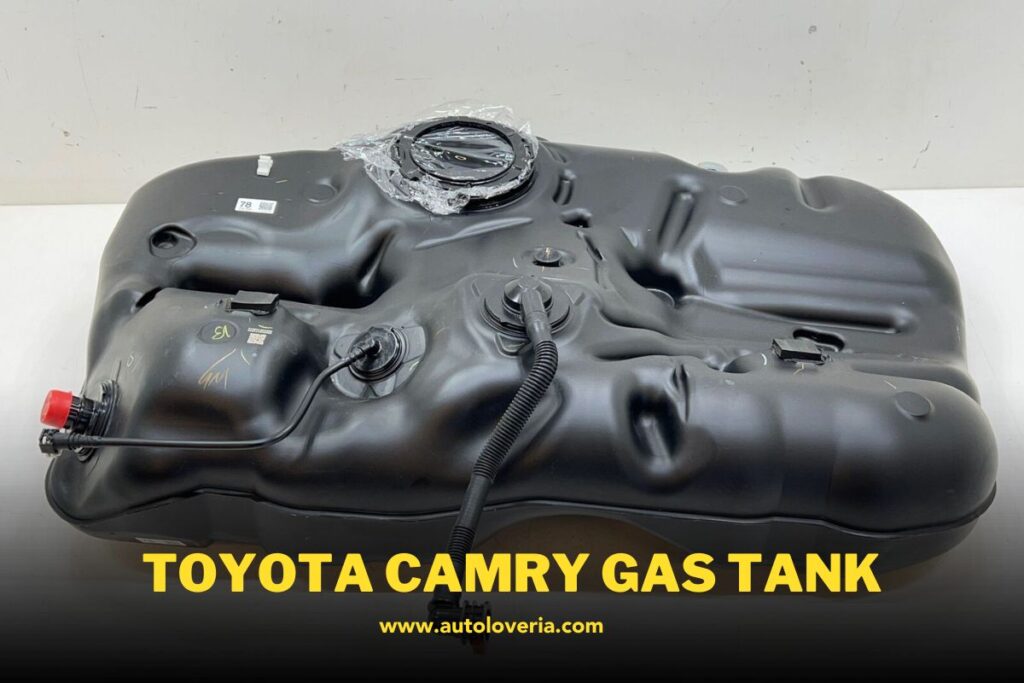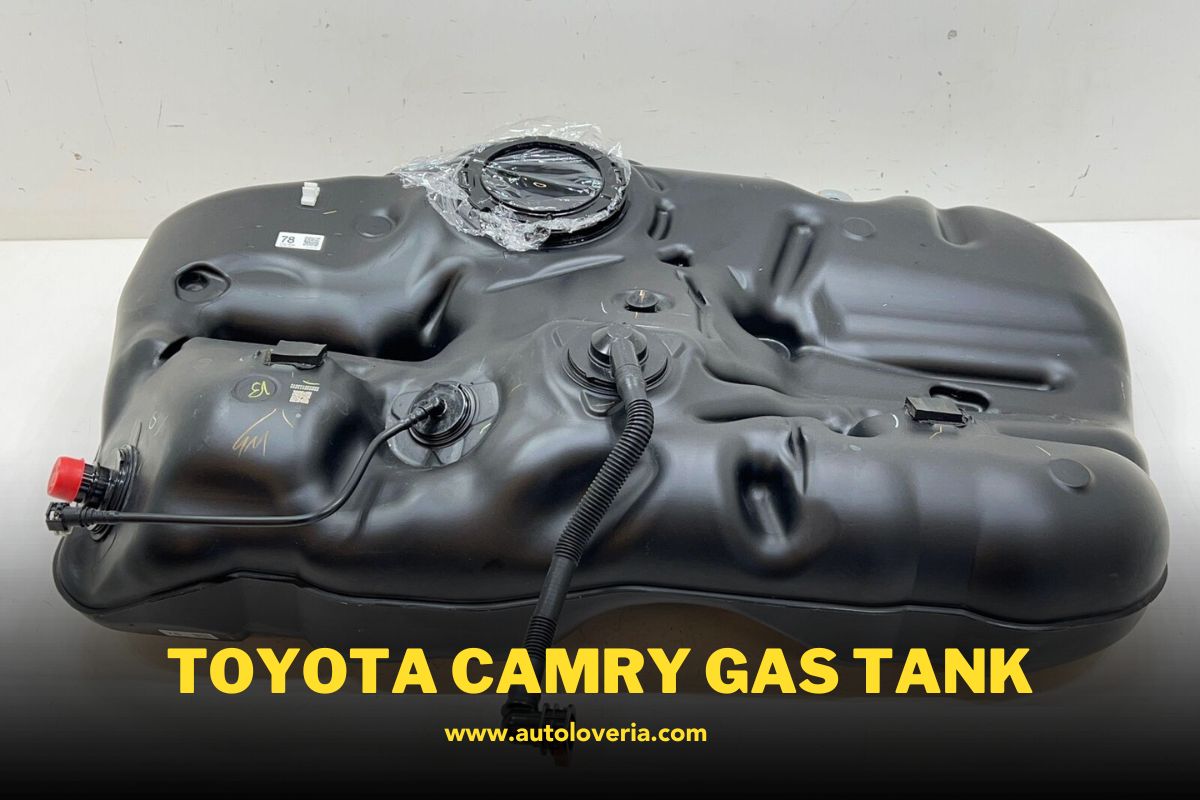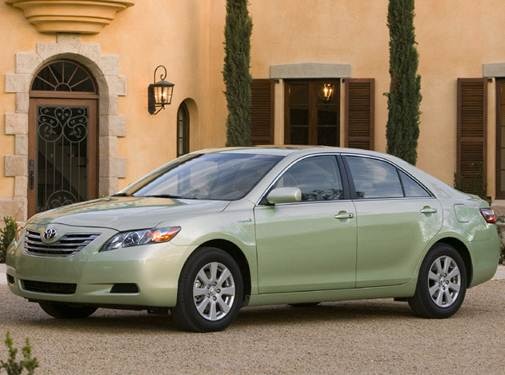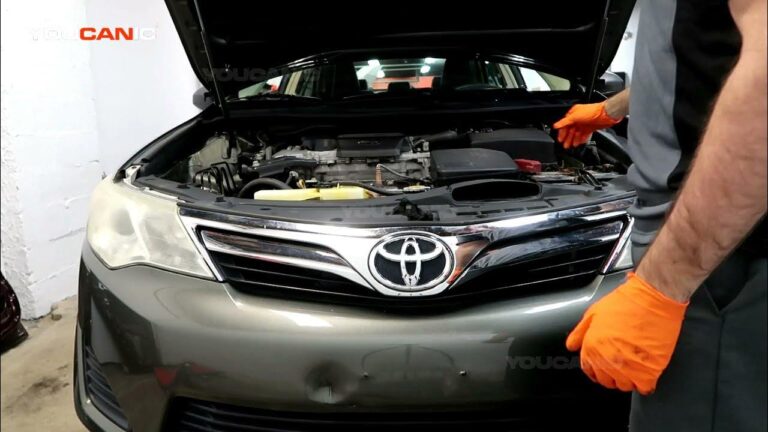How Big is Toyota Camry Gas Tank?
The toyota camry gas tank has a capacity of approximately 16 gallons, making it a mid-sized sedan with a moderately sized fuel storage capacity. The camry gas tank’s size allows for decent range on highways and in urban areas, providing convenience and efficiency for daily commutes and longer trips alike.
The 2022 Toyota Camry offers a range of options to cater to your driving needs, and one of the key distinctions lies in the size of its gas tank. Let’s dive into the details:
1. The Standard Model with FWD: If you’re rolling with the standard front-wheel-drive model of the 2022 Toyota Camry, you’ll have the luxury of a 15.8-gallon gas tank. That’s plenty of room to keep you cruising along the road for quite a while.
2. All-Wheel Drive Trim Levels: Now, for those who prefer the enhanced traction and stability of an all-wheel drive setup, the gas tank size varies slightly. The all-wheel drive trim levels come equipped with a 14.3-gallon gas tank. It may be a tad smaller, but it’s still ample for your daily drives and weekend adventures.
3. Hybrid Setup: Going green and embracing hybrid technology? The 2022 Toyota Camry hybrid boasts a 13.2-gallon gas tank. It’s designed to complement the efficiency of the hybrid powertrain, ensuring you can go longer between fill-ups while reducing your environmental footprint.
It’s worth noting that when it comes to the Toyota Camry, gas tank sizes can vary depending on factors like trim level, model options, and even model years. However, for the 2022 edition, the sizes we’ve listed above are the ones you can count on.
So, whether you’re opting for the standard model’s spacious 15.8-gallon tank, the all-wheel drive’s nimble 14.3-gallon tank, or the hybrid’s efficient 13.2-gallon tank, you’ll find the 2022 Toyota Camry ready to take you on your next adventure with confidence.
The toyota camry is a popular choice among drivers due to its combination of style, reliability, and fuel efficiency. With its appealing design and comfortable interior, the camry offers a smooth ride for both driver and passengers. In addition, the camry boasts impressive fuel economy, allowing drivers to go further on less fuel.
The gas tank’s size plays a crucial role in providing a suitable balance between fuel storage and overall vehicle weight. With its 16-gallon capacity, the toyota camry gas tank offers ample space to support extended journeys without compromising on performance or efficiency. Whether for city driving or long-distance travel, the camry’s gas tank ensures convenience and peace of mind.

Understanding The Size And Capacity Of Toyota Camry Fuel Tank
The toyota camry is a popular sedan known for its reliability and fuel efficiency. If you’re considering purchasing a camry or simply curious about its gas tank size, you’ve come to the right place.
Factors That Determine The Size Of The Gas Tank
The size of a toyota camry’s gas tank is influenced by several factors. Let’s take a closer look at these factors:
- Vehicle model and year: Different camry models and years may have varying gas tank sizes. This can be attributed to design changes and advancements in technology.
- Engine type: The type of engine installed in a toyota camry can affect the size of its gas tank. Engines with higher fuel consumption rates may require larger tanks to support longer trips between refueling.
Average Size Of Toyota Camry Gas Tank
While the gas tank size can vary depending on the model and year of the vehicle, there is an average size for toyota camry gas tanks. On average, a toyota camry has a gas tank capacity of around 15 to 17 gallons.
Keep in mind that this is just an approximation and may vary slightly between different camry trim levels.
Impact Of Gas Tank Size On Fuel Efficiency
The size of the gas tank can have an impact on the fuel efficiency of a toyota camry. Understanding this relationship will help you plan your trips and make the most out of your fuel.
- Larger gas tank: A larger gas tank allows for a greater driving range before refueling. This can be beneficial for long road trips or when access to gas stations is limited. However, a larger tank can also result in additional weight, potentially reducing the fuel efficiency.
- Smaller gas tank: A smaller gas tank means less weight and potentially better fuel efficiency. However, frequent refueling may be required, especially for long-distance travel.
The size of a toyota camry’s gas tank can vary depending on factors such as the vehicle model, year, and engine type. On average, a camry has a gas tank capacity of around 15 to 17 gallons. While a larger tank may provide a greater driving range, it can impact fuel efficiency due to added weight.
Conversely, a smaller tank may offer better fuel efficiency but require frequent refueling. Consider your driving needs and priorities when evaluating the gas tank size of a toyota camry.
Enhancing Trammping Experience And Trip Planning
Enhancing Tramping Experience And Trip Planning
Are you planning a tramping adventure with your toyota camry? Enhancing your tramping experience and planning your trip efficiently can make a world of difference. Here, we’ll explore how to accurately estimate fuel stops, avoid frequent refueling, and plan efficient routes, ensuring a seamless journey from start to finish.
Accurately Estimating Fuel Stops:
- Calculate your average fuel consumption per mile or kilometer to get a better estimate of how many fuel stops you may need during your trip.
- Consider the capacity of your toyota camry’s gas tank, which is typically around 16 to 17 gallons (60-65 liters), and use this information as a baseline to determine the frequency of refueling.
- Take into account factors such as terrain, traffic conditions, and the weight you’ll be carrying to ensure a more accurate estimation of your fuel stops.
- Use online fuel calculators or smartphone apps specifically designed for estimating fuel consumption to assist you in planning.
Avoiding Frequent Refueling:
- Fill up your gas tank before embarking on your tramping adventure to avoid the inconvenience of frequent refueling stops.
- Monitor your fuel gauge and plan your refueling stops strategically. Refuel when your gauge reaches around a quarter or a third of a tank, depending on the distance to the next gas station.
- Opt for gas stations that offer competitive prices along your route to save money on fuel expenses.
- Consider carrying a spare fuel canister for emergencies, especially if you’re exploring remote areas with limited access to gas stations.
Planning Efficient Routes:
- Utilize gps navigation systems or map apps that provide real-time traffic updates to avoid congested areas and plan the most efficient routes.
- Research and identify gas stations along your planned route to ensure you have easy access to fuel when needed.
- Take advantage of online platforms that allow you to map out your trip and provide valuable information about nearby attractions, points of interest, and gas stations.
- Consider alternative routes that may offer scenic views or interesting landmarks, providing an enhanced tramping experience while eliminating the need for detours in search of fuel.
By accurately estimating fuel stops, avoiding frequent refueling, and planning efficient routes, you can maximize your tramping experience with your toyota camry. Enjoy the journey and make lasting memories along the way!
Maximizing Fuel Efficiency And Distance Covered
The toyota camry is a popular sedan known for its reliability, comfort, and fuel efficiency. One of the key factors that contribute to the car’s fuel efficiency is its gas tank capacity.
So, let’s dive in!
Driving Habits And Techniques:
- Maintaining a steady speed on the highway can help conserve fuel. Avoid unnecessary acceleration or sudden braking.
- Use cruise control whenever possible to maintain a consistent speed and reduce fuel consumption.
- Anticipate traffic flow and adjust your driving accordingly to avoid unnecessary stops and starts.
- Avoid idling for extended periods as it leads to unnecessary fuel consumption.
- When starting from a stop, accelerate smoothly and gradually to avoid excessive fuel usage.
- Plan your routes efficiently to minimize driving distances.
Vehicle Weight And Load:
- Removing unnecessary items from your vehicle can help reduce weight and improve fuel efficiency. Avoid carrying heavy objects or equipment unless required.
- Roof racks, cargo boxes, and bike carriers can increase wind resistance, reducing fuel efficiency. Remove them when not in use.
- Avoid overloading your vehicle beyond its recommended carrying capacity. Excess weight puts additional strain on the engine, leading to increased fuel consumption.
Terrain Conditions And Driving Environment:
- Driving uphill requires more power and fuel. Try to maintain a steady speed and avoid unnecessary acceleration.
- Take advantage of downhill slopes by coasting whenever possible. However, maintain control of your vehicle and prioritize safety.
- Driving in extreme weather conditions such as snow or heavy rain can reduce fuel efficiency. Plan your trips accordingly and drive with caution.
Proper Maintenance And Regular Servicing:
- Regularly check and replace air filters to ensure optimal engine performance and fuel efficiency.
- Keep tires properly inflated to the recommended pressure. Underinflated tires increase rolling resistance and decrease fuel efficiency.
- Follow the recommended maintenance schedule for oil changes, tune-ups, and other servicing requirements. Well-maintained vehicles perform better and consume less fuel.
By implementing these tips and techniques, you can maximize the fuel efficiency of your toyota camry and cover more distance on each tank. Remember, small changes in driving habits and proper maintenance can go a long way in reducing fuel consumption and saving money at the pump.
Enjoy your efficient and enjoyable drives with the toyota camry!
Saving Money And Reducing Carbon Footprint
With rising fuel costs and the ever-increasing concern for the environment, it’s important to find ways to save money and reduce our carbon footprint. The toyota camry, known for its fuel efficiency, proves to be an excellent choice for those looking to make conscious decisions that impact both their wallets and the planet.
In this section, we will explore efficient driving techniques, tire pressure maintenance, reducing aerodynamic drag, and the importance of regular oil changes and tune-ups for optimizing fuel economy in the toyota camry. Let’s dive in and discover how these practices can help you save money while reducing your carbon footprint.
Efficient Driving Techniques:
- Maintain a steady speed: Avoid abrupt acceleration and braking, as these actions waste fuel. Instead, accelerate gradually to reach your desired speed and use gentle braking when necessary.
- Anticipate traffic: Keep an eye on the road ahead and adjust your speed accordingly. By anticipating traffic flow and avoiding unnecessary stops or delays, you can enhance fuel efficiency.
- Use cruise control: When appropriate, engage cruise control to maintain a constant speed, especially on long highway drives. This helps to minimize fuel consumption by avoiding unnecessary fluctuations.
Appropriate Tire Pressure:
- Check tire pressure regularly: Ensure that your toyota camry’s tires are inflated to the recommended pressure levels specified in the owner’s manual. Proper tire pressure reduces rolling resistance, optimizing fuel efficiency.
- Benefits of proper inflation: Maintaining appropriate tire pressure helps to improve your vehicle’s handling, extend tire life, and enhance safety on the road.
- Schedule regular inspections: It’s vital to have your tires inspected regularly to detect possible leaks, punctures, or signs of wear and tear. Promptly addressing any issues ensures optimal fuel efficiency.
Reducing Aerodynamic Drag:
- Remove unnecessary weight: The heavier your vehicle, the more fuel it consumes. Regularly remove any unnecessary items from your toyota camry to lighten the load.
- Close windows and sunroofs at higher speeds: Open windows and sunroofs create drag, which affects the vehicle’s aerodynamics. For better fuel efficiency, roll up windows and close sunroofs when driving on highways or at higher speeds.
- Use aerodynamic accessories: Consider using accessories like wind deflectors or aerodynamic caps to reduce drag and enhance fuel economy.
Regular Oil Changes And Tune-Ups:
- Follow the recommended service intervals: Adhering to the manufacturer’s recommended oil change and tune-up schedule is vital for maintaining optimal fuel efficiency in your toyota camry.
- Use the right oil: Ensure that you use the recommended engine oil grade as specified by toyota. The right oil reduces friction, enhancing engine efficiency and fuel economy.
- Regular maintenance checks: Regularly inspect your vehicle’s air filters, spark plugs, and other components that can impact fuel efficiency. Replacing or cleaning them as needed helps to optimize performance and reduce fuel consumption.
By implementing these efficient driving techniques, maintaining appropriate tire pressure, minimizing aerodynamic drag, and prioritizing regular oil changes and tune-ups, you can maximize fuel economy in your toyota camry. Saving money and reducing your carbon footprint has never been easier or more rewarding with such smart practices.
Take control of your driving habits and make a positive impact on both your wallet and the environment.
Frequently Asked Questions On How Big Is Toyota Camry Gas Tank
How Big Is The Toyota Camry Gas Tank?
The toyota camry gas tank typically has a capacity of around 14. 5 gallons. However, it’s important to note that this may vary slightly depending on the specific model and year of the camry. It’s always a good idea to consult the owner’s manual or contact a toyota dealership for the most accurate information.
Conclusion
To summarize, understanding the size of the toyota camry gas tank is crucial for anyone considering purchasing this popular sedan. With a capacity of around 16 gallons, the camry provides ample fuel storage for everyday driving needs. This means fewer trips to the gas station and more time on the road.
The efficient fuel economy of the camry ensures that your journeys are not only convenient but also cost-effective. Whether you’re commuting to work or embarking on a long road trip, the camry’s gas tank size provides the peace of mind that you won’t be running on empty any time soon.
Its spacious interior, advanced technology, and reputation for reliability make the toyota camry a top choice in the sedan market. So, if you’re searching for a vehicle that delivers both style and practicality, look no further than the toyota camry.






